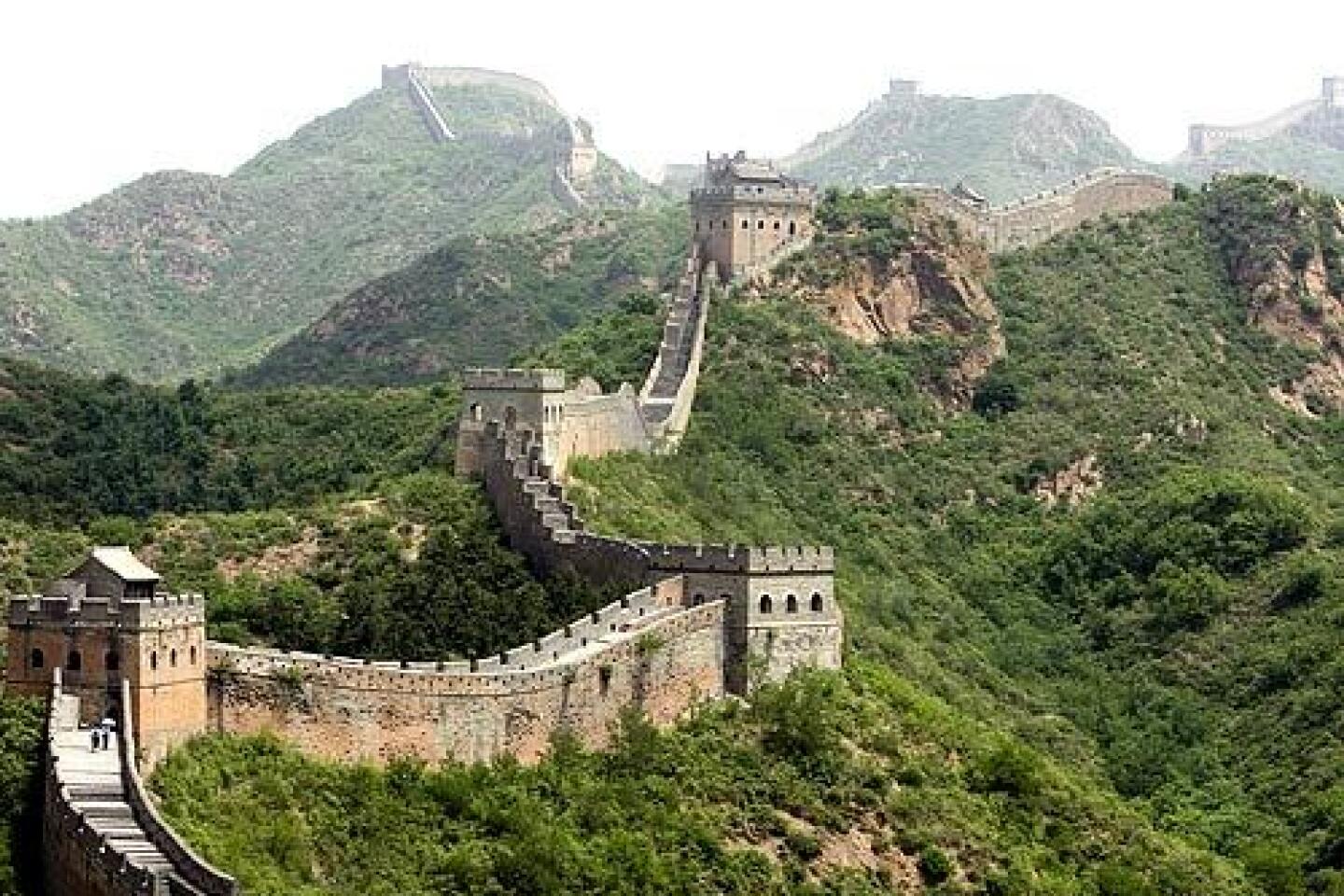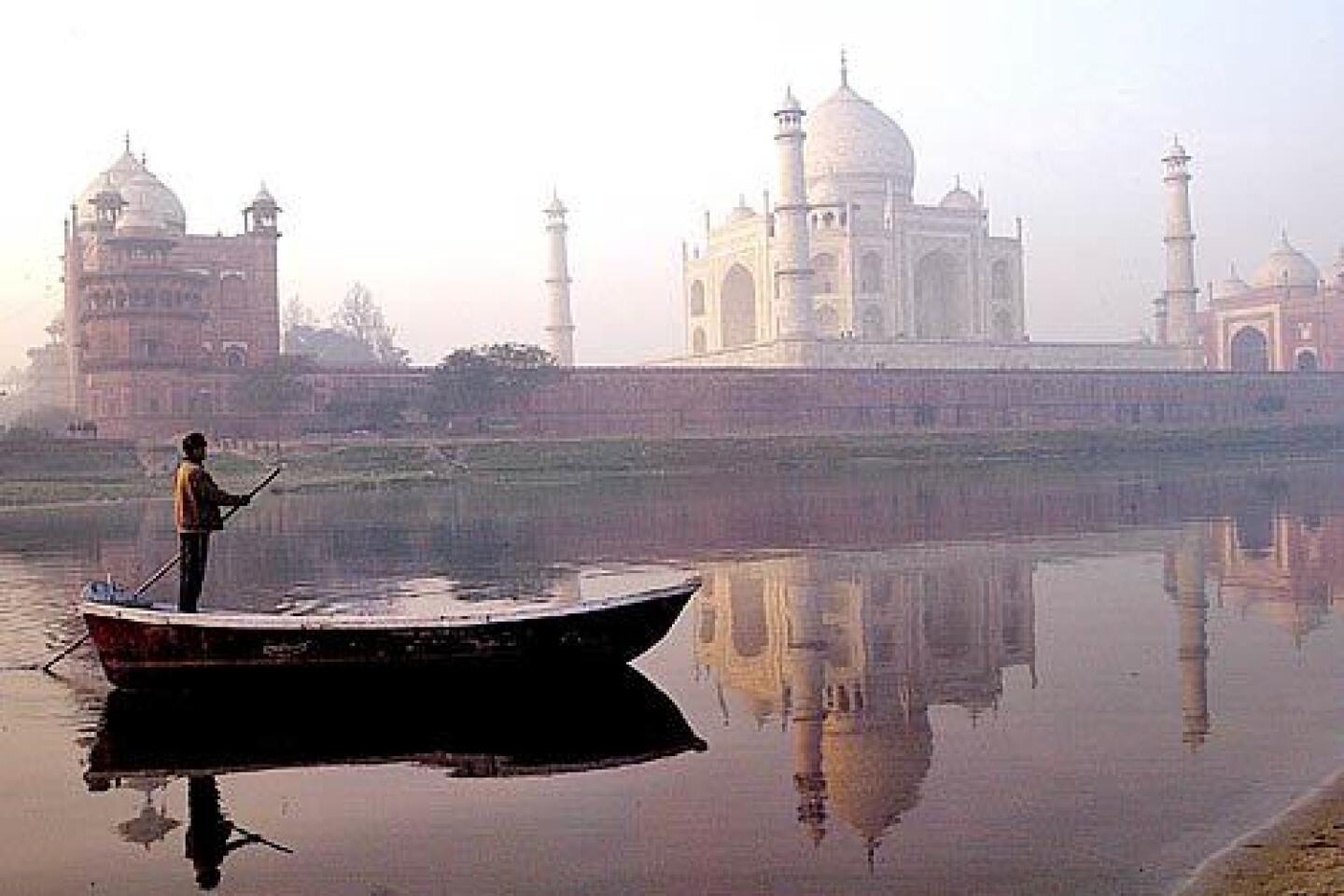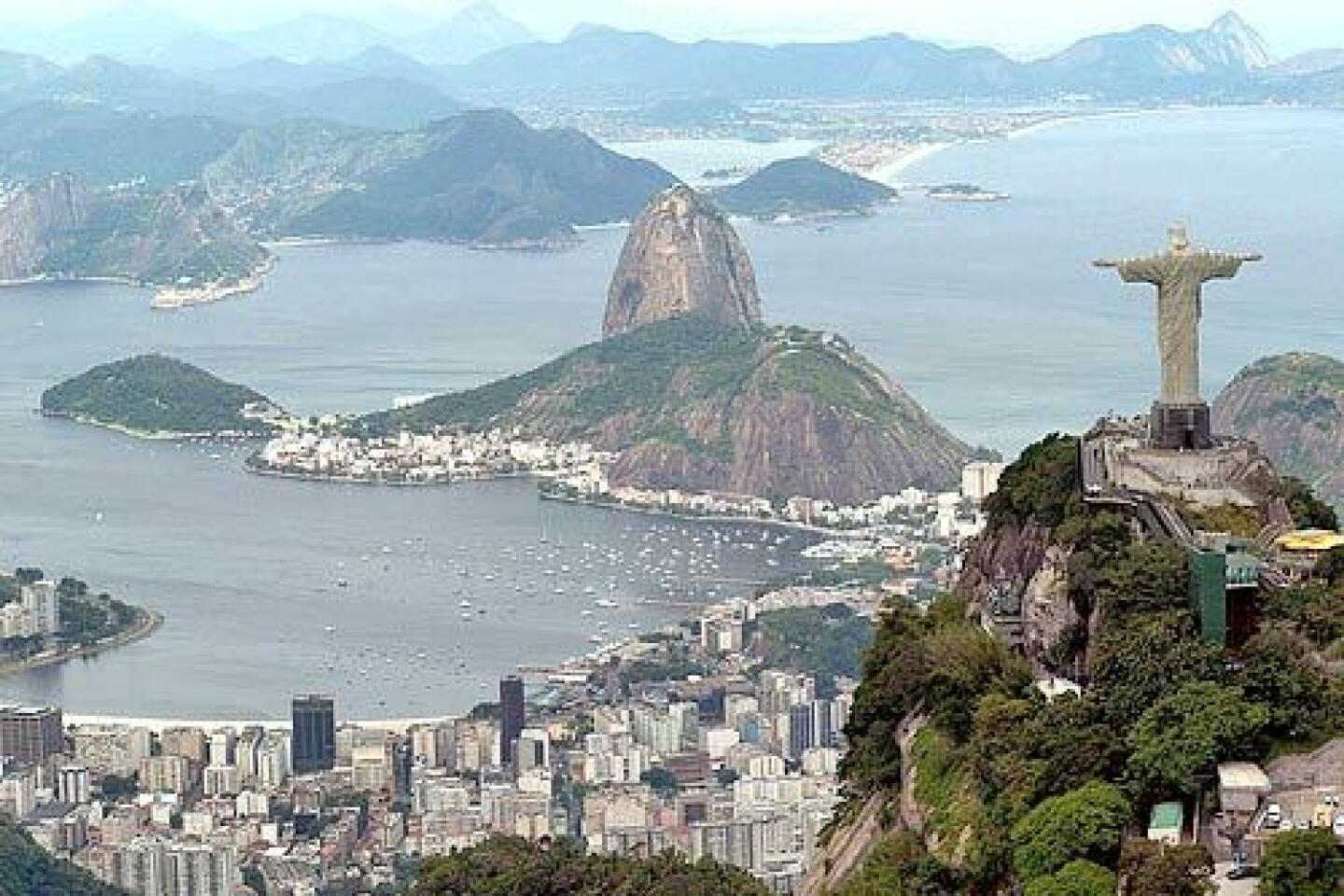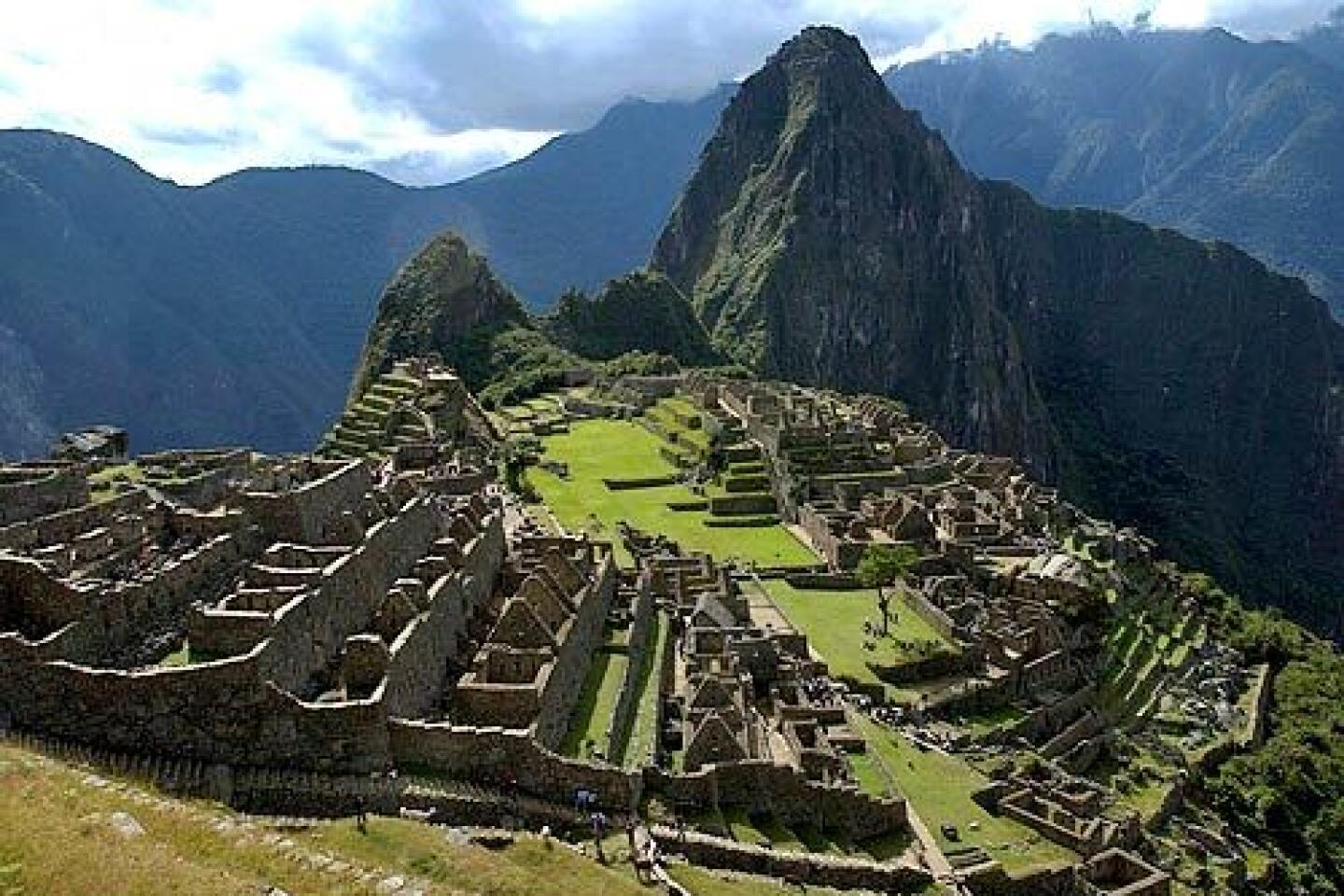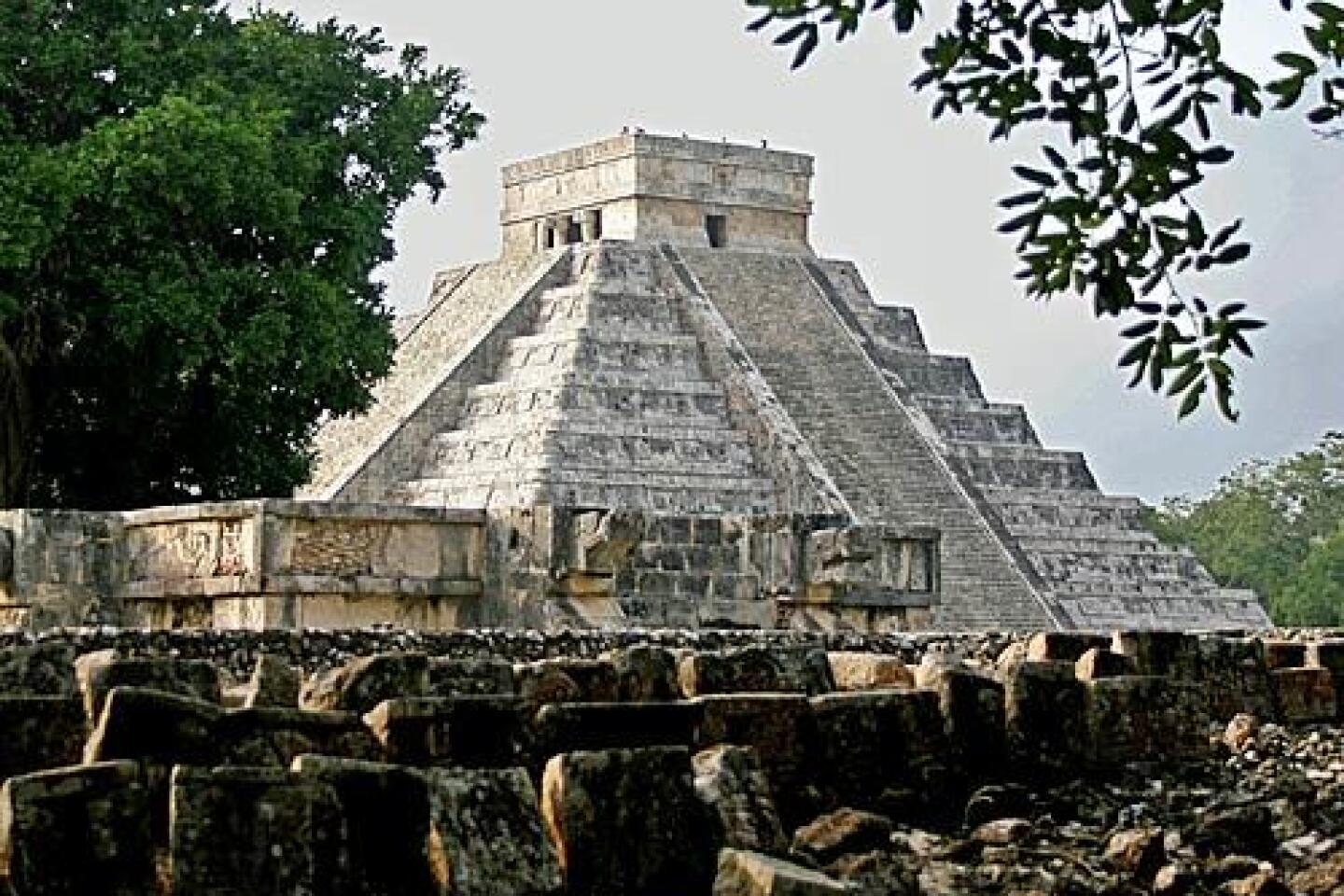The Seven Wonders of the World, 2.0
- Share via
LISBON — The world’s most wondrous wonder is actually the computer.
Millions of people from across the globe joined in what was essentially a huge publicity stunt, voting via the Internet to choose a new list of the Seven Wonders of the World, announced Saturday.
And the seven winners, announced on the seventh day of the seventh month in the year ‘07, were: The Great Wall of China, the ancient city of Petra in Jordan, the statue of Christ the Redeemer in Rio de Janeiro, Machu Picchu in Peru, the Maya ruins of Chichen Itza in Mexico, the Colosseum in Rome and India’s Taj Mahal.
The lucky seven represented a collection of mystical, centuries-old places and more modern constructions of limited transcendence -- chosen in a decidedly unscientific poll.
“We are celebrating the cultural diversity of our world,” proclaimed actor Ben Kingsley, co-host of a glitzy ceremony late Saturday in Lisbon’s Stadium of Light, where the winners were announced amid highly orchestrated fanfare.
The popularity contest was the creation six years ago of Bernard Weber, a Swiss filmmaker and self-styled adventurer. Nearly 200 early candidate sites chosen by Internet balloting were scaled down by a panel of experts to 21 finalists, each from a different country, from Greece’s Acropolis to the Statue of Liberty.
Online and telephone call-in voting on the finalists began a little over a year ago. Nothing prevented repeat voting by fans, citizens, governments, tourism agencies, you name it.
Weber promoted the project with flashy appearances in hot-air balloons, on camelback and inside a blue blimp, traveling to each of 21 final candidates.
The reception was mixed.
In developing countries where the Internet is taking off, such as China, millions of people enthusiastically cast votes for their favorite monuments. Since the Great Wall was one of the candidates (and a winner), it was an easy guess just where most of those votes went.
In the fabled Incan capital of Cuzco, Peru, Internet cafes reportedly had been full for weeks with supporters clicking their votes for the nearby majestic ruins of Machu Picchu.
In Jordan, Queen Rania lobbied (successfully) on behalf of the ancient red-stoned desert city of Petra. The Spanish royals, along with Prime Minister Jose Luis Rodriguez Zapatero, did their bit (unsuccessfully) to promote the candidacy of the Alhambra, the 13th century Moorish citadel in Granada.
Elsewhere, there was indifference, and even indignation.
Chilean President Michelle Bachelet, referring to the enormous volcanic-rock carvings on Chile’s remote Easter Island, said: “None of us need a vote to know that Easter Island is a marvel.”
Apathy and disdain apparently doomed Stonehenge, Britain’s prehistoric collection of circularly arranged megaliths. “The polling arrangements” in the contest “are so flawed that they make even Eurovision Song Contest judges look objective,” sniffed London’s Independent newspaper.
And in Rome, the campaign never caught fire. Calls last week to both the city government and the Culture Ministry could find no one who had even heard of the competition.
Fortunately for the 2,000-year-old Colosseum near downtown Rome, there is enough popular sentiment among Italians and, especially, among legions of foreign visitors to catapult the onetime amphitheater of the gladiators into the winner’s circle.
Stefania Morelli, an accountant in Rome, said a win for the Colosseum would be a good thing for residents and tourists alike.
“We drive past the Colosseum with our motorini day after day, and we don’t appreciate it; we don’t even look at it anymore,” Morelli, 41, said ahead of Saturday’s announced results. “Should the Colosseum win, I think Romans would look at it and think about how beautiful [it is] and how lucky we are to have it in Rome. Romans would finally lift their heads and look at it.”
Speaking of Rome, the Roman Catholic Church complained that none of the finalists was a Christian church, noting instead the inclusion of Istanbul’s Hagia Sophia, a 6th century Byzantine church converted to a mosque by the Ottoman Turks nine centuries later. Christian prayer there today is prohibited.
Perhaps the Vatican took solace in the designation as a wonder of the 125-foot Christ the Redeemer statue, erected atop a mountain above Rio in the 1920s.
Weber’s “New 7 Wonders” campaign has not received the backing of major mainstream monument-designation organizations. Officials at UNESCO’s World Heritage agency, for example, questioned Weber’s methodology and goals. He has promised that a portion of the money he raises will go to the preservation of precious sites.
Organizers of the Internet campaign cast themselves as successors to the Greeks who about 2,000 years ago compiled the original list of the Seven Wonders of the Ancient World. At least one of those wonders may never have existed, and today only one survives: the 4,500-year-old pyramids of Giza, in Egypt.
Initial plans to include the pyramids as a candidate for the new list so incensed Egyptian officials that organizers were forced to back down. The Supreme Council of Antiquities of Egypt argued that the pyramids already enjoyed wondrous status, and the organizers agreed to put the carved-stone monuments automatically on the new list as the eighth wonder.
Maria de Cristofaro of The Times’ Rome Bureau contributed to this report.
More to Read
Sign up for The Wild
We’ll help you find the best places to hike, bike and run, as well as the perfect silent spots for meditation and yoga.
You may occasionally receive promotional content from the Los Angeles Times.
